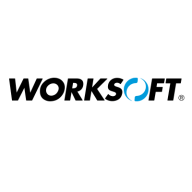

OpenText Functional Testing and Worksoft Certify compete in the functional testing arena. While OpenText Functional Testing is praised for desktop application compatibility and integration options, Worksoft Certify is preferred for script-free automation with SAP integrations, appealing particularly to non-technical users.
Features: OpenText Functional Testing offers extensive browser and OS support, .xlsx format data handling, and Insight object recognition, though users face IDE and memory challenges. Worksoft Certify supports codeless test creation, emphasizing SAP use, and broad process automation, appealing to non-technical personnel.
Room for Improvement: OpenText could enhance compatibility with modern browsers, reduce memory use, and improve object recognition. Worksoft Certify could boost web-based application support and enhance reporting features, with a focus on maintaining automation amid app updates.
Ease of Deployment and Customer Service: OpenText provides flexible deployment options primarily on-premises with hybrid cloud capabilities, receiving mixed support reviews. Worksoft Certify offers hybrid and public cloud deployment, earning praise for prompt support though at a higher cost.
Pricing and ROI: OpenText is considered expensive, justified by broad functionality, suggesting skilled engineers for maximum ROI. Worksoft Certify, while costly, is advantageous due to rapid deployment in SAP environments, offering fast ROI through reduced development time.
The development time using UFT can be cut down into half as compared to coding from scratch.
Automation is done very fast, leading to improvements in the QA process and reducing the time needed for test automation.
We can easily achieve a return on investment in one, two, or three years.
Organizations can't wait for this lengthy process, especially when they are under pressure with their timelines.
Support cases are easily created and attended to promptly, depending on urgency.
The technical support is rated eight out of ten.
Their technical support is responsive, which is good, and their solutions are timely.
I would rate their technical support a nine out of ten.
The tool can be installed on all computers used by developers or test automation engineers.
We are an enterprise company. It covers companies of all sizes.
One of the key stability issues was that Windows would consume memory without releasing it, leading to regression testing crashes.
I would rate it a nine out of ten for stability.
We frequently encountered stability issues when the browser dependency caused Windows to consume memory without releasing it, leading to crashes during regression testing.
If it could move closer to a no-code or low-code solution, it might dominate the market again.
Incorporating behavior-driven development tests would enhance the capabilities of UFT One.
Focusing more on AI and its integration with Worksoft would really help enhance our processes.
There are still some minor issues concerning continuous testing, particularly related to the timeout feature.
The pricing or licensing policy of OpenText is a bit expensive, however, it's one of the best solutions in the market.
There are many open-source tools with no cost, and there are no-code tools that are less expensive than UFT.
It's cheaper than Tricentis Tosca but more expensive than some others.
As it is a quality tool, the price is slightly higher, but that is acceptable compared to other tools, especially considering the ROI.
The pricing is minimal and moderate.
UFT supports Oracle, SAP, PeopleSoft, and other non-web applications, making automation feasible.
The object repository is one of the best in the market, allowing creation of a repository useful for all tests.
The best features of OpenText Functional Testing include descriptive programming, the ability to add objects in the repository, and its ease of use for UI compared to other tools.
Teams who are planning for automation and are still in manual testing can use Worksoft Certify, and significant time and resources will be reduced.
We're getting good value from continuous testing management, and the fact that it's also codeless is valuable.
| Product | Market Share (%) |
|---|---|
| OpenText Functional Testing | 8.7% |
| Worksoft Certify | 4.3% |
| Other | 87.0% |


| Company Size | Count |
|---|---|
| Small Business | 20 |
| Midsize Enterprise | 12 |
| Large Enterprise | 71 |
| Company Size | Count |
|---|---|
| Small Business | 9 |
| Midsize Enterprise | 6 |
| Large Enterprise | 58 |
OpenText Functional Testing provides automated testing with compatibility across technologies, browsers, and platforms. It targets APIs, GUIs, and applications like SAP and Oracle for efficient test automation, emphasizing usability and integration with tools such as Jenkins and ALM.
OpenText Functional Testing offers wide-ranging automation capabilities for functional and regression testing, API testing, and automation across web, desktop, and mainframe applications. It supports script recording and object identification, appealing to less technical users. Despite its advantages, it grapples with memory issues, stability concerns, and a challenging scripting environment. Its VBScript reliance limits flexibility, generating demand for enhanced language support and speed improvement. Users appreciate its role in continuous integration and deployment processes, managing test data efficiently, and reducing manual testing efforts.
What are the key features of OpenText Functional Testing?In industries like finance and healthcare, OpenText Functional Testing is leveraged for end-to-end automation, ensuring streamlined processes and accuracy in testing. Many companies utilize it for efficient test data management and integrating testing within continuous integration/deployment operations.
Worksoft Certify offers codeless automation for efficient test scripting by non-programmers. It integrates with SAP, supports multiple interfaces, and ensures seamless end-to-end testing, facilitating time savings and streamlined operations.
Worksoft Certify stands out for its unique codeless automation capabilities, enabling users without programming skills to easily create automated test scripts. Its Capture feature effortlessly records user actions, accelerating test development. Integration with SAP systems and support across various interfaces make it highly versatile. The tool's architecture allows for easy script maintenance and decouples scripts from data, speeding up testing processes while minimizing manual effort. Although it's known for excellence in automating SAP applications, there is room for improvement in areas like web and mobile integration, UI enhancements, and support responsiveness.
What are the key features of Worksoft Certify?In industries relying on SAP and ERP systems, Worksoft Certify serves as a valuable tool for automating regression and integration testing. Organizations benefit from reduced manual testing effort and faster project delivery times. It's extensively utilized in sectors requiring large-scale SAP deployment and cloud application integration, making it integral in streamlining business operations.
We monitor all Test Automation Tools reviews to prevent fraudulent reviews and keep review quality high. We do not post reviews by company employees or direct competitors. We validate each review for authenticity via cross-reference with LinkedIn, and personal follow-up with the reviewer when necessary.